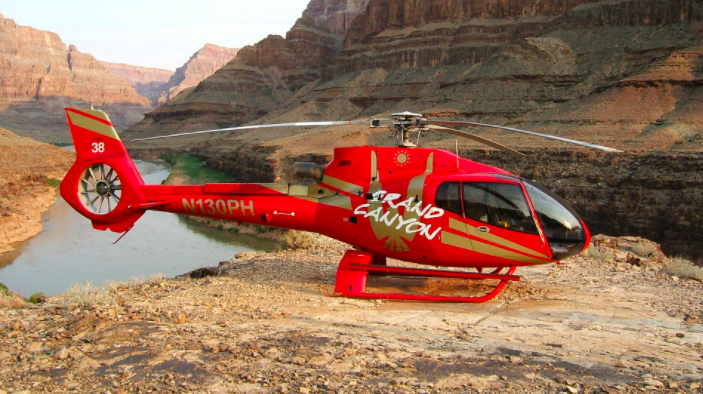Grand Canyon helicopter crash highlights the safety risks of sightseeing flights
At a time when airlines in the Western world have achieved astonishing levels of safety, the relative risks of sightseeing flights are all the more apparent

The tragic deaths of British tourists in a helicopter crash in the Grand Canyon has highlighted the risks involved in sightseeing flights, at a time when flying on commercial aircraft has never been safer.
The combination of Las Vegas, the world capital of neon, and America’s greatest natural icon is alluring, and a helicopter provides the swiftest and most spectacular connection between the two.
The biggest operator is Papillon, the company whose helicopter was lost on Saturday, killing three and injuring three.
It is believed that around 6,000 UK visitors fly from Las Vegas to the Grand Canyon each year with Papillon, which describes itself as “The World’s Largest Aerial Sightseeing Company”.
The typical $299 trip begins with a shuttle pick-up from the hotel and a half-hour drive to Boulder City municipal airport, where the firm’s terminal is located.
The helicopter flight takes 35 minutes, with views of the Hoover Dam and Lake Mead before entering the Grand Canyon itself.
The descent of 4,000 feet to the canyon floor reveals hundreds of millions of years of geological history.
While helicopter access to National Park lands is strictly controlled, the landing zone is in on Hualapai tribal lands in the west of the Grand Canyon. Day-trippers are taken on a boat ride on the Colorado River, the waterway which created the canyon.
The optimum time to leave is close to sunset, when the dazzling Arizona light softens and reveals a spectrum from scarlet to gold. This was when Saturday’s tragedy happened.
At a time when airlines in the Western world have achieved astonishing levels of safety, the relative risks of sightseeing flights are all the more apparent.
The vast majority of trips are safe. But safety standards for sightseeing flights, whether by helicopter or light aircraft, are not as stringent as those for larger commercial planes.
Six people died in 2001 when another Papillon helicopter crashed in the Grand Canyon; one woman survived but with life-changing injuries.
In 2015 nine people died in a seaplane crash near Ketchikan in Alaska after the pilot became disorientated when flying in cloud. Investigators found that he had been under pressure from his company to return the passengers to their cruise ship before it departed.
On New Year’s Eve, five British tourists in Australia died when their seaplane crashed while flying back from a waterside restaurant to Sydney. They included the British businessman, Richard Cousins, and members of his family. The cause of the crash is still being investigated.
Today, at hundreds of locations around the world, thousands of British tourists will step aboard sightseeing flights.
The overwhelming odds are that they will return safely with nothing but a gallery of photographs and lifelong memories. But in aviation as in life, risk can never be completely eliminated.
Join our commenting forum
Join thought-provoking conversations, follow other Independent readers and see their replies
Comments